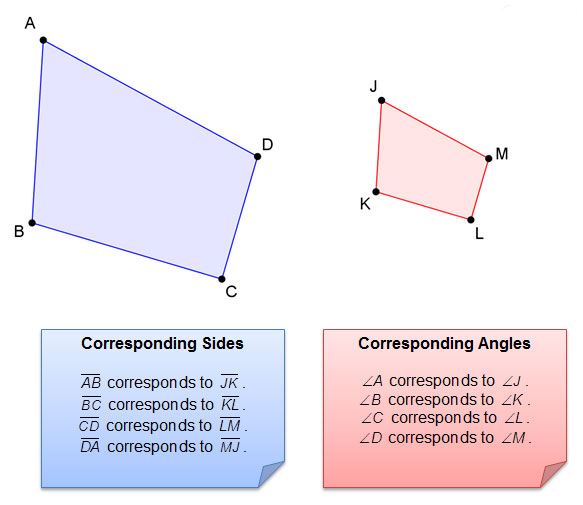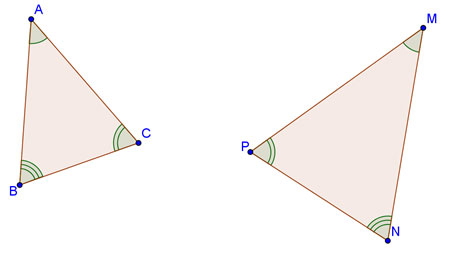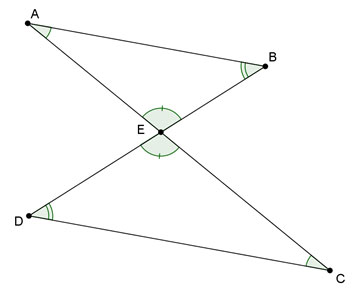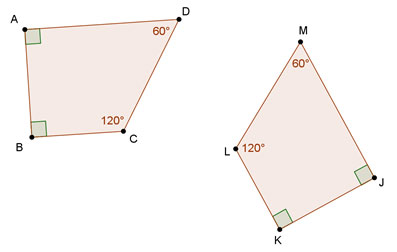
In the last section, you used characteristics of corresponding parts of similar figures in order to define similarity. If the figures are oriented the same, it is relatively easy to identify corresponding parts of similar figures.
For example, in the figure below, quadrilateral ABCD is similar to quadrilateral JKLM.

Sometimes, identifying corresponding parts is a little trickier. In this section, you will practice using different ways to identify corresponding parts of similar figures.
![]() In the figure below, kite ABCD is similar to kite WXYZ. Match each side or angle in kite WXYZ to its corresponding part of kite ABCD by dragging the label to the appropriate blank.
In the figure below, kite ABCD is similar to kite WXYZ. Match each side or angle in kite WXYZ to its corresponding part of kite ABCD by dragging the label to the appropriate blank.
Interactive popup. Assistance may be required.

Interactive popup. Assistance may be required.
Look for angles with the same markings (one arc, two arcs, one arc with a hash mark, etc.). These two angles are congruent and since the figures are similar, are corresponding parts.
Interactive popup. Assistance may be required.
Use the vertices of the angles as endpoints of the line segments containing the sides of the triangle. For example, once you know that ∠A corresponds with ∠W and that ∠B corresponds with ∠X, then you can match AB and WX as corresponding sides.
Why do you think it is important to be able to identify corresponding parts of similar figures?
For each of the figures below, determine the angle that corresponds with ∠A and the side that corresponds with AB.


